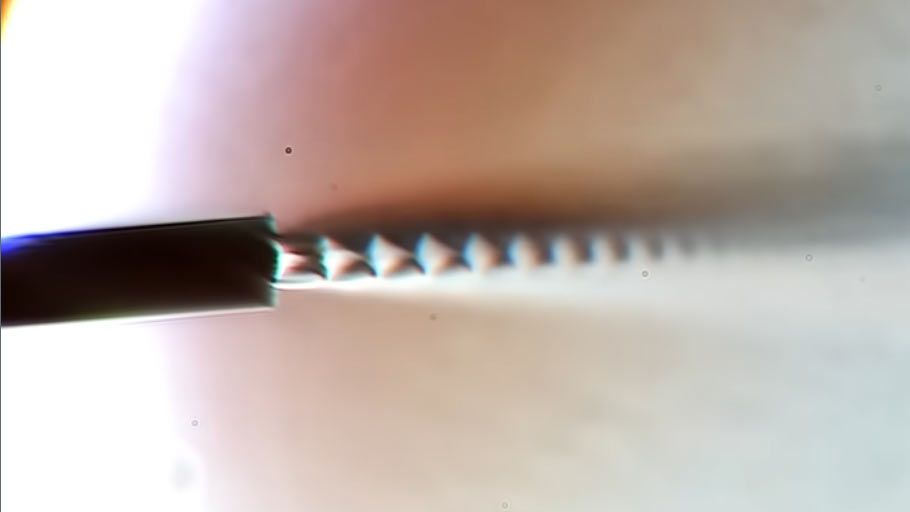Ordinary canned air products shoot out jets of gas with a surprising amount of vigor. A precision engineering and machining YouTuber, Cylo’s Garage, noticed telltale ‘shock diamonds’ in the stream emitted by his Staples-branded canned air and felt compelled to investigate further. Using a Schlieren imaging setup, the YouTuber managed to confirm that the humble air duster was pushing out a supersonic flow of gas (h/t Hackaday).
Like many a fascinating discovery, Cylo’s Garage first noticed the supersonic jets emitted from the canned air nozzle by accident. Checking the air jet with a bright light in the background, confirmed that the Staples Electronics Duster was operational, but upon pulling the trigger fully the YouTuber noticed what looked like shock diamonds…
For some background, Cylo’s Garage explained that shock diamonds are a type of air pattern commonly visible in the trail of a supersonic jet or rocket. Overlapping shock and expansion waves interfere with one another to create the characteristic diamond shapes in the air. These are easy to see behind a jet or rocket, propelled by fuel combustion, with the light and dark areas in the wake of the engine representing waves of contrasting air density. However, this phenomenon seemed improbable coming from a jet of ordinary canned air with perhaps 70 PSI.
About halfway through the video from Cylo’s Garage, we get to see how supersonic air speeds were confirmed using a rudimentary Schlieren imaging setup. All that was needed was a simple lens, a razor blade, an imaging sensor, and a light source. See this test setup, above. This admittedly “janky” set up more or less confirmed shock diamonds in the flow of gas from the can.
Pleased with the first quick experiment, Cylo’s Garage decided to refine the test method and apparatus. At six minutes in, we see a new set of test equipment put together with a far better lens and a columnated light source. From seven and a half minutes you can see the first air jets recorded using the new apparatus.
In tests, the canned air soon ran out of pressure between bursts, but more consistent shock diamonds were pictured from the nozzle of an air compressor (90 PSI). However, the YouTuber’s favorite demo was delivered using the ball pump nozzle on the air compressor hose. Have a look through the gallery above for some of the great shock diamonds emitted from the canned air and various nozzles attached to a shop compressor.




